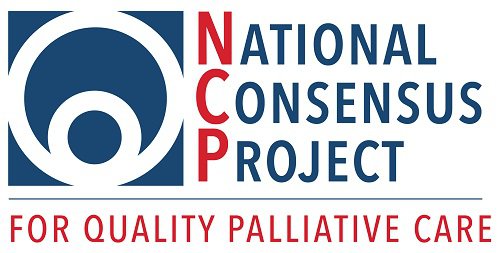Designing Home-Based Palliative Care for Sustainability
This is part two of a two-part blog series in which Jeanne provides highlights from CAPC’s home-based palliative care interview series. Important elements of program design are discussed in detail, including the demonstrating program value, addressing financial health, and attaining sustainability. If you missed part one, you can read it here.

CAPC sought input from the field about challenges that health care entities face when designing and developing sustainable home-based palliative care (HBPC) programs, and to gather input on what’s needed to bring HBPC to scale. With funding from the Cambia Health Foundation, CAPC interviewed program leaders representing a diverse array of HBPC programs. We’re sharing highlights below.
Embedding Practices That Lead to Quality Care
Challenges

- Many HBPC programs are unaware of existing quality standards, such as the National Consensus Project (NCP) Clinical Practice Guidelines for Quality Palliative Care, which outlines core domains of high quality services.
- Lack of clarity about whether national palliative care standards apply to HBPC means that programs attempt to measure and convey their value without consensus on standards.
- Lack of understanding about what quality HBPC encompasses makes it difficult for programs to convey their value to—and form partnerships with—payers.
- HBPC programs often lack expertise in how to evaluate program performance and outcomes, and either don’t have access to the data needed to describe program impact, or have difficulty translating it into compelling narratives in order to convey program value to diverse stakeholders.
Tips from the Field
- NCP Guidelines are the gold standard for palliative care delivery; actively refer to them at team meetings to stay focused on quality.
- Cultivate processes that support quality:
- Start slowly and pilot the program.
- Embed key metrics into routine documentation in the EMR.
- Strengthen processes for assessing patient need, stratifying service intensity based on need.
- Include hospice staff in team meetings to better assure smooth transitions.
- Invite patients and families into the conversation about quality HBPC.
- Train staff to understand quality markers.
- Outline a feasible measurement strategy for the program from day one; incorporate clinical and operational measures.
- Be conservative; focus on metrics that matter most to your key stakeholders, especially those financing the program.
- Use both quantitative and qualitative data to demonstrate impact and make the case for additional resources; patient stories provide compelling narratives.
NCP Guidelines are the gold standard for palliative care delivery.
Resources: How CAPC Can Help
The Need For Innovative Payment Models
Challenges
- The most significant financial challenge facing programs is the lack of a Medicare palliative care benefit that adequately covers costs.
- Most programs currently rely on fee-for-service (FFS) payment as their primary source of reimbursement; however, FFS fails to sufficiently cover costs.
- Staff are often under-trained on how to ensure and maximize appropriate billing and coding for services.
- Many programs are unable to partner with payers to fund services through value-based or capitated payment models; they lack the knowledge on how to partner, as well as the infrastructure and staffing to meet health plan requirements.
Tips from the Field
- Determine a strategy to move away from fee-for-service as a program’s primary source of reimbursement.
- Learn to work with payers, ACOs, and other risk-bearing entities, and negotiate a payment approach which adequately covers program costs.
- Develop a keen understanding of the financial structure of hospitals and health plans to better identify opportunities for funding.
- Build relationships with organizational partners (e.g., data and business/finance experts), enlisting them to present the program’s financial value to the C-Suite.
- Work with national membership organizations to gain consensus on payment models that result in sustainable quality HBPC programs that support interdisciplinary care.
How CAPC Can Help
- Attend the CAPC Payment Accelerator: Financial Partnerships for Community-Based Palliative Care Programs, scheduled for November 7.
- Take the online course and toolkit: Building the Business Plan for Community-Based Palliative Care.
- View the toolkit, Funding a Palliative Care Program.
- Attend training and receive mentoring on program financing through a Palliative Care Leadership Center.
Sustainability is About More Than Finances
Challenges
- Lack of a shared understanding of palliative care across stakeholders, combined with fragmentation among field leaders on definitions of palliative care, compromises sustainability. Confusion reigns concerning distinctions among palliative care and hospice, home health services, in-home primary care programs, and chronic care/disease management programs.
- Workforce shortages in palliative care significantly impact a program’s viability.
- Sustainability is jeopardized when program scope expands beyond capacity and budget.
- Programs unable to demonstrate value to the C-Suite of various stakeholder organizations become susceptible to organizational whims, scrimping for resources and uncertainty about long-term sustainability.
Tips from the Field
- Long-term viability is critically tied to:
- Effective leadership.
- Strong relationships and regular communication with stakeholders, especially those financing the program.
- Continuity in patient care and excellence in services and staffing.
- Attention to quality.
- Recruiting and retaining the right staff.
- Ability to demonstrate program value.
- Conduct a needs assessment before launching an HBPC program—and periodically thereafter—to clarify why palliative care services are important to the organization, stakeholders, clinicians, families, and patients. Needs assessments provide the “true north” critical for sustainability.
- New HBPC programs need up-front investment to launch.
- Ask leadership—early and often—which measures and outcomes matter to them. Delivering on those outcomes can determine the degree to which an HBPC program receives institutional support.
Needs assessments provide the ‘true north’ critical for sustainability.
How CAPC Can Help
- Review Demonstrating Palliative Care Value: Tools for Making The Case.
- Utilize the Leadership Skills in Palliative Care toolkit and take the Improving Team Performance course.
- Use the Needs Assessment toolkit and take the corresponding course for community-based programs.
- Use the Building and Supporting Effective Palliative Care Teams toolkit, which includes quick tips for hiring and onboarding
Additional Resources
- Learn how to successfully design an HBPC program by attending CAPC’s Pre-Seminar Boot Camp: Designing Palliative Care Programs in Community Settings on November 13, 2019.
- For HBPC program profiles and in-depth information on program startups, please reference CAPC’s Palliative Care in the Home: A Guide to Program Design.
- Read part one for perspectives on HBPC program design, focused on patients served, services offered, and the interdisciplinary team.
